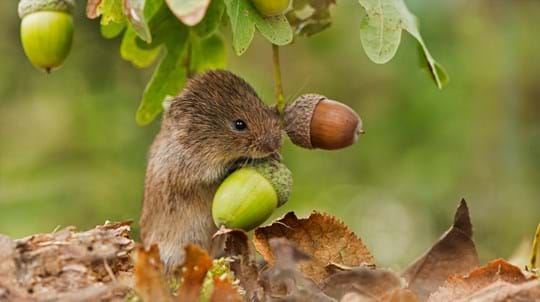
About us
Who we are
The Woodland Trust is the UK's largest woodland conservation charity.
The Woodland Trust is committed to providing a website that is accessible and easy to use for the widest range of visitors possible, regardless of disability or impairment.
The site has been designed to adhere to best practice by following the Web Content Accessibility Guidelines 2.1 (WCAG), published by the World Wide Web Consortium (W3C).
Our aim is to be WAI WCAG level A compliant as a minimum,
and will use best endeavours to meet AA where possible,
complying with priority 1 and 2 guidelines as interpreted by the Trust’s Content Team.
We are continually working to make usability improvements to the website for all users. In some instances, content and functionality may be dependent on third party providers. We will endeavour to work with providers or seek alternatives where possible to meet our accessibility aims.
We try our best to ensure we test with a range of technologies, but we can’t commit to testing every browser/operating system/assistive technology combination. We focus on testing with the latest major versions of the most popular browsers based on our user base.
We test using the following browsers and assistive technology combinations:
There are a number of steps we have taken to address accessibility needs that are detailed below:
Page titles are unique and are relevant to the content contained within the page.
Headings are relevant and descriptive. The heading structure is designed to provide a way of getting a logical overview of the page and allowing screen readers to jump to areas of interest.
Language should be clear and easy to understand.
The wording for text links will be carefully chosen so that each link clearly indicates the destination and is easy to identify.
Links will not open in a new window as a general rule. Where they do, it will be to provide additional information to support an activity e.g. determining a grid reference.
We are committed to providing transcripts and/or subtitles for key pieces of new video content available on the website where possible. We are using YouTube descriptions and captioning. These captions can be accessed by clicking the 'CC' button within the video player.
There are a number of PDF documents available for download across the site. You can find out more about how to configure the free Adobe Reader software to obtain greater access to PDF files by visiting the Adobe site.
Download Adobe Reader for free
In order to avoid any conflict with personal access keys you may have set up on your computer, we have chosen not to install bespoke access keys on this site. Efforts have been made to ensure the site is as easy to navigate as possible.
Text size can be increased or decreased if it is not suitable for easy reading. Use your browser settings to adjust the size.
Follow these steps for making changes in popular browsers:
We have designed pages and chosen colours to provide good contrast between text and its background, and avoid combinations that are known to cause difficulties for people with colour blindness. We also apply appropriate contrasts levels to other non-text elements such as tab focus indicators.
Alt text (alternative text) is a phrase which describes an image's content for users deploying screen readers.
We use descriptive alt text wherever an image conveys essential information in the context of the overall page content. Where an image is decorative, we do not include alt text.
We have designed the forms on our site to make it easier to complete for all users.
Where we have multi stage forms, a progress bar will be used and a clear indication of the current stage in the form sequence will be given to assisted technology users.
The tab order between each element of the form and between form stages will be logical.
The information required for each form field will be clearly labelled. All fields will be treated as mandatory by default. Optional fields will be identified as such.
Feedback on data entered in a form will be grouped and clearly highlighted as requiring attention with a clear description on the required action. Moving to correct the errors will be simple for assistive technology users.
More information on how to make your browsing experience easier is available for the BBC's My web my way website. This includes advice and help for those who may benefit from making changes to their browser, operating system or computer to be able to view the web in a more accessible way.
We are continually seeking to make improvements to the site and welcome any comments, suggestions or feedback. If you experience any accessibility issues whilst using our website, please let us know by emailing us at enquiries@woodlandtrust.org.uk.

About us
The Woodland Trust is the UK's largest woodland conservation charity.

Support us
There's no better way to protect the trees we all need than by becoming a member of the Woodland Trust.

Contact us
Find out how to get in touch with a member of the Woodland Trust team who can help answer your questions.